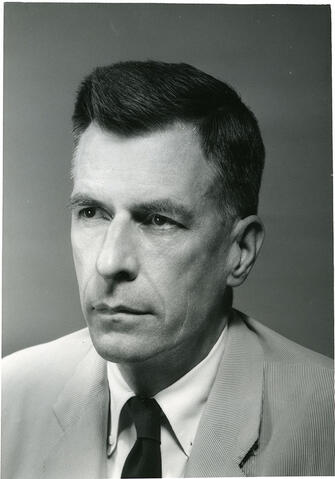
Zone du titre et de la mention de responsabilité
Titre propre
John Kenneth Galbraith - Portrait
Dénomination générale des documents
- Document graphique
Titre parallèle
Compléments du titre
Mentions de responsabilité du titre
Notes du titre
Niveau de description
Pièce
Cote
Zone de l'édition
Mention d'édition
Mentions de responsabilité relatives à l'édition
Zone des précisions relatives à la catégorie de documents
Mention d'échelle (cartographique)
Mention de projection (cartographique)
Mention des coordonnées (cartographiques)
Mention d'échelle (architecturale)
Juridiction responsable et dénomination (philatélique)
Zone des dates de production
Date(s)
-
[1965?] (Production)
Zone de description matérielle
Description matérielle
1 photograph : b&w ; 17.5 x 12.5 cm
Zone de la collection
Titre propre de la collection
Titres parallèles de la collection
Compléments du titre de la collection
Mention de responsabilité relative à la collection
Numérotation à l'intérieur de la collection
Note sur la collection
Zone de la description archivistique
Nom du producteur
Historique de la conservation
Portée et contenu
Head and shoulders image of John Kenneth Galbraith, Honourary Degree recipient; possibly taken at time of presentation.
Bio/Historical Note: John Kenneth Galbraith, also known as Ken Galbraith, was born in 1908 at Iona Station, Ontario. After study at the University of Toronto’s Ontario Agricultural College (now part of the University of Guelph; BS 1931) and the University of California, Berkeley (PhD 1934), Galbraith, who became a U.S. citizen in 1937, taught successively at Harvard and Princeton universities until 1942. During World War II and the postwar period, he held a variety of government posts and served as editor of Fortune magazine (1943-48) before resuming his academic career at Harvard in 1948. He established himself as a politically active liberal academician with a talent for communicating with the reading public. A key adviser to President John F. Kennedy, Galbraith served as ambassador to India from 1961 to 1963, when he returned again to Harvard; he became professor emeritus in 1975. He also continued his involvement in public affairs, and in 1967-68 he was national chairman of Americans for Democratic Action. Galbraith’s major works included American Capitalism: The Concept of Countervailing Power (1951), in which he questioned the competitive ideal in industrial organization. In his popular critique of the wealth gap, The Affluent Society (1958), Galbraith faulted the “conventional wisdom” of American economic policies and called for less spending on consumer goods and more spending on government programs. In The New Industrial State (1967) he envisioned a growing similarity between “managerial” capitalism and socialism and called for intellectual and political changes to stem what he saw as a decline of competitiveness in the American economy. Among his many other works were The Great Crash, 1929 (1955), The Liberal Hour (1960), Ambassador’s Journal (1969), A Life in Our Times: Memoirs (1981), The Anatomy of Power (1983), Economics in Perspective: A Critical History (1987), and The Culture of Contentment (1992). He was awarded the Presidential Medal of Freedom in 1946 and 2000. Galbraith died in 2006 in Cambridge, Massachusetts, at age 96.
Zone des notes
État de conservation
Source immédiate d'acquisition
Classement
Langue des documents
Écriture des documents
Localisation des originaux
Disponibilité d'autres formats
Restrictions d'accès
Photographer: Unknown
Copyright holder: Unknown
Other terms: Responsibility regarding questions of copyright that may arise in the use of any images is assumed by the researcher.

